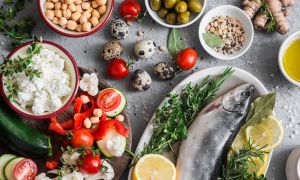Advertisement
- Low-sodium foods contain 140 milligrams or less of sodium per serving and per 100 grams of food. Ordinary table salt (sodium chloride) is not the only source of sodium. It is also found in monosodium glutamate (MSG), sodium bicarbonate (baking soda), and sodium nitrate and occurs naturally in some foods.
- Very low sodium means that a food contains 35 milligrams or less of sodium per serving and per 100 grams of food.
- Sodium free or salt free items have less than 5 milligrams of sodium per serving.
- Light in salt means that the food has 50% less sodium than the regular version.
Continue Learning about Nutrition and Weight Loss
Important: This content reflects information from various individuals and organizations and may offer alternative or opposing points of view. It should not be used for medical advice, diagnosis or treatment. As always, you should consult with your healthcare provider about your specific health needs.



